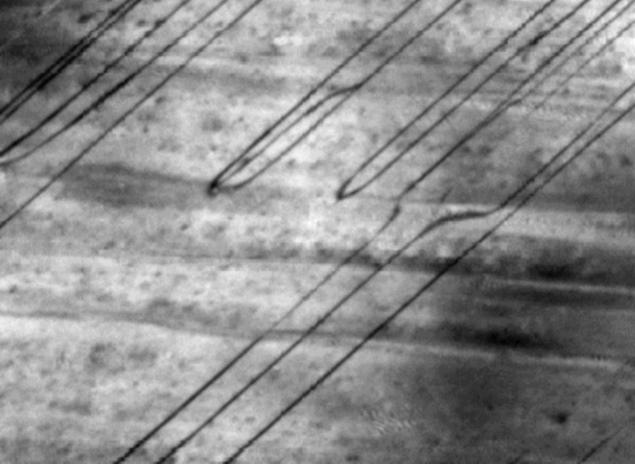- Home
- Others
- Others News
- Researchers claim to find storage potential of antiferroelectric crystals
Researchers claim to find storage potential of antiferroelectric crystals

Domain walls, which separate areas in certain crystalline materials, display a polarisation, potentially allowing information to be stored in the smallest of spaces - thus saving energy, said a study.
Researchers from Forschungszentrum Julich (Julich Research Centre) in Germany, University of Silesia in Katowice, Poland, and Xi'an Jiaotong University in China, investigated so-called antiferroelectric crystals with the help of the most advanced electron microscopes and computer simulations.
Ferroelectricity is generated when displacements of positive and negative ions result in the formation of electrical dipoles, said the study published in the journal Nature Communications.
Ferroelectric materials are used to store data on train tickets.
Till date, these materials showed no electrical polarisation. The researchers have now discovered that certain areas within these materials do exhibit ferroelectric polar properties.
"We can imagine these materials as being like three-dimensional patchwork objects made from regularly-arranged building blocks, which are the domains," said Xiankui Wei, visiting scientist at the Peter Grunberg Institute at Forschungszentrum Julich.
"Within each individual building block, the polarisation is absent due to cancellation of oppositely arranged electric dipoles in the basic structure unit. However, the boundaries or 'walls' between domains are polar," Wei added.
The ferroelectric areas discovered are only around two nanometers thick and could, therefore, one day be used to store data in a tenth of the space that magnetic materials use, said researchers.
The researchers are now investigating these phenomena in more detail, concluded the research.
Catch the latest from the Consumer Electronics Show on Gadgets 360, at our CES 2026 hub.
- Samsung Galaxy Unpacked 2025
- ChatGPT
- Redmi Note 14 Pro+
- iPhone 16
- Apple Vision Pro
- Oneplus 12
- OnePlus Nord CE 3 Lite 5G
- iPhone 13
- Xiaomi 14 Pro
- Oppo Find N3
- Tecno Spark Go (2023)
- Realme V30
- Best Phones Under 25000
- Samsung Galaxy S24 Series
- Cryptocurrency
- iQoo 12
- Samsung Galaxy S24 Ultra
- Giottus
- Samsung Galaxy Z Flip 5
- Apple 'Scary Fast'
- Housefull 5
- GoPro Hero 12 Black Review
- Invincible Season 2
- JioGlass
- HD Ready TV
- Laptop Under 50000
- Smartwatch Under 10000
- Latest Mobile Phones
- Compare Phones
- Honor Win RT
- Honor Win
- Xiaomi 17 Ultra Leica Edition
- Xiaomi 17 Ultra
- Huawei Nova 15
- Huawei Nova 15 Pro
- Huawei Nova 15 Ultra
- OnePlus 15R
- Asus ProArt P16
- MacBook Pro 14-inch (M5, 2025)
- OPPO Pad Air 5
- Huawei MatePad 11.5 (2026)
- Xiaomi Watch 5
- Huawei Watch 10th Anniversary Edition
- Acerpure Nitro Z Series 100-inch QLED TV
- Samsung 43 Inch LED Ultra HD (4K) Smart TV (UA43UE81AFULXL)
- Asus ROG Ally
- Nintendo Switch Lite
- Haier 1.6 Ton 5 Star Inverter Split AC (HSU19G-MZAID5BN-INV)
- Haier 1.6 Ton 5 Star Inverter Split AC (HSU19G-MZAIM5BN-INV)












